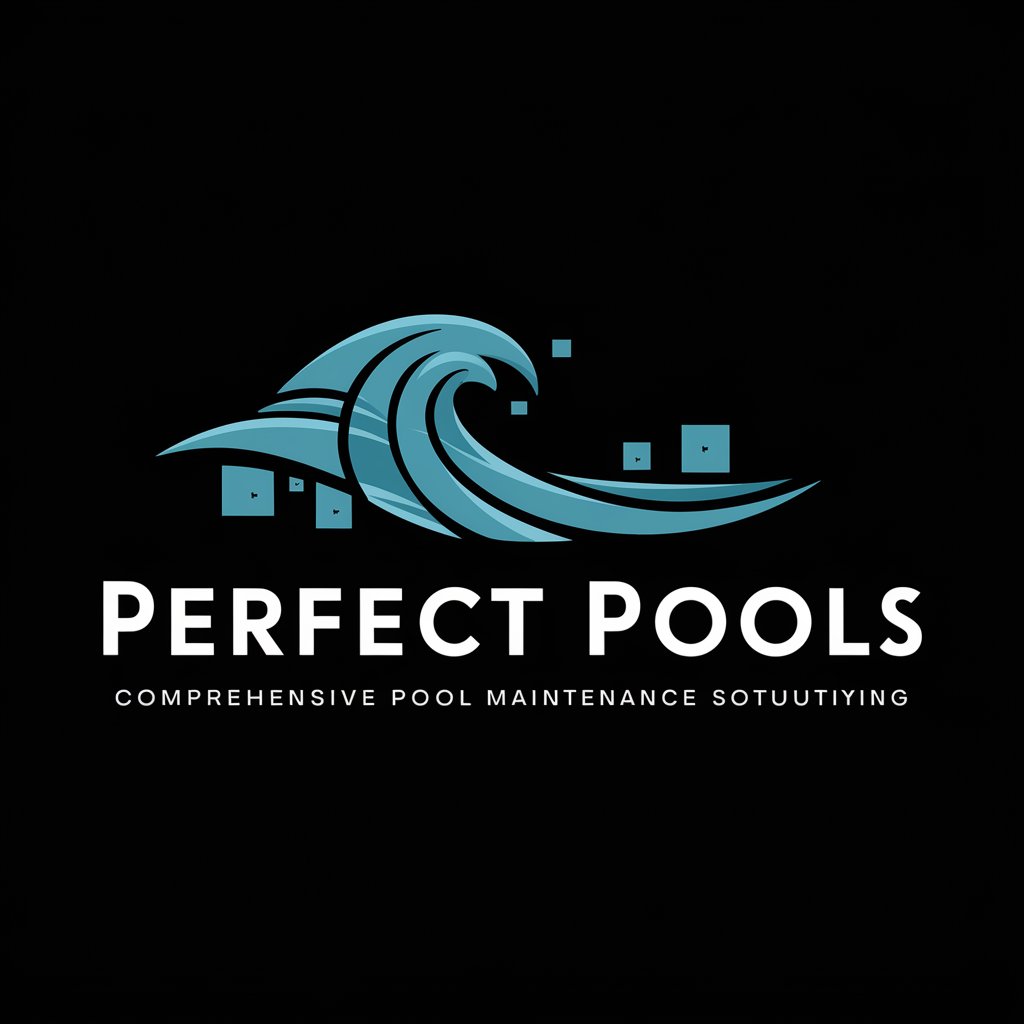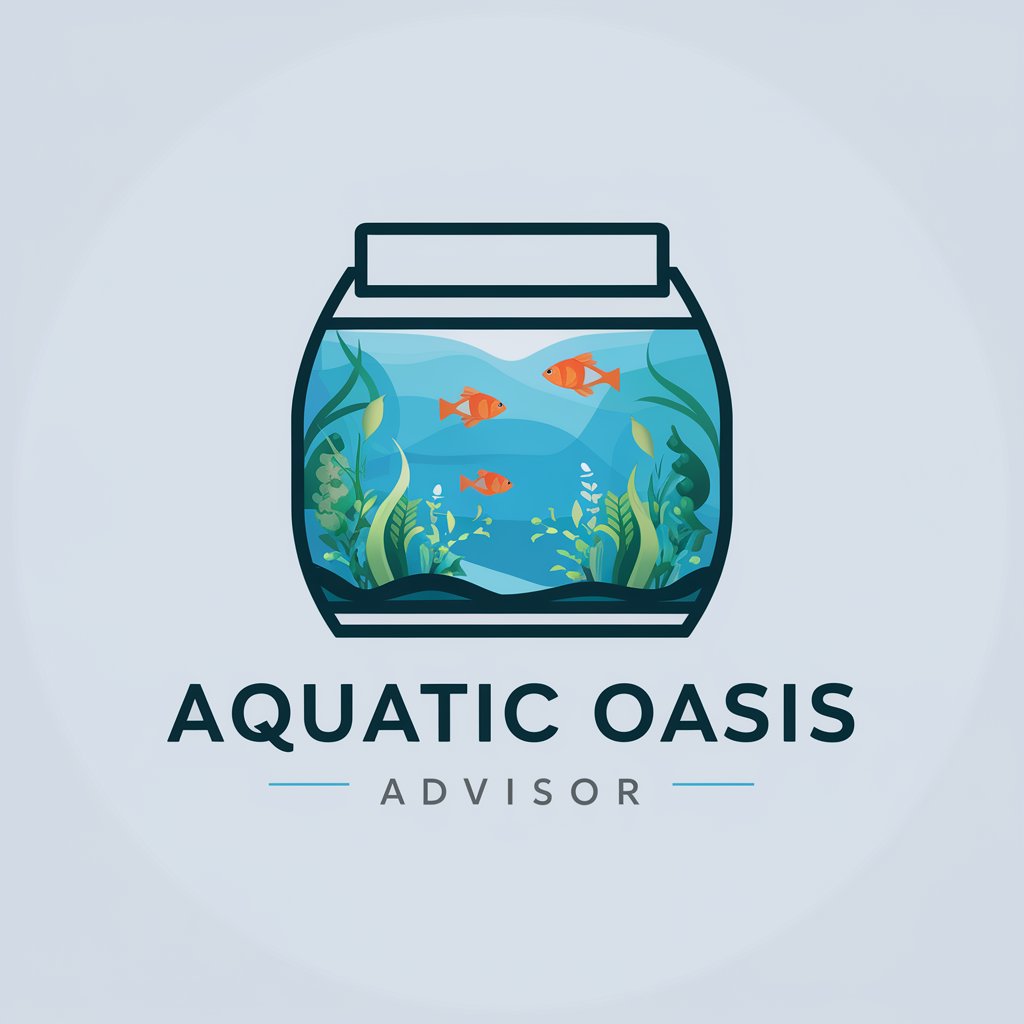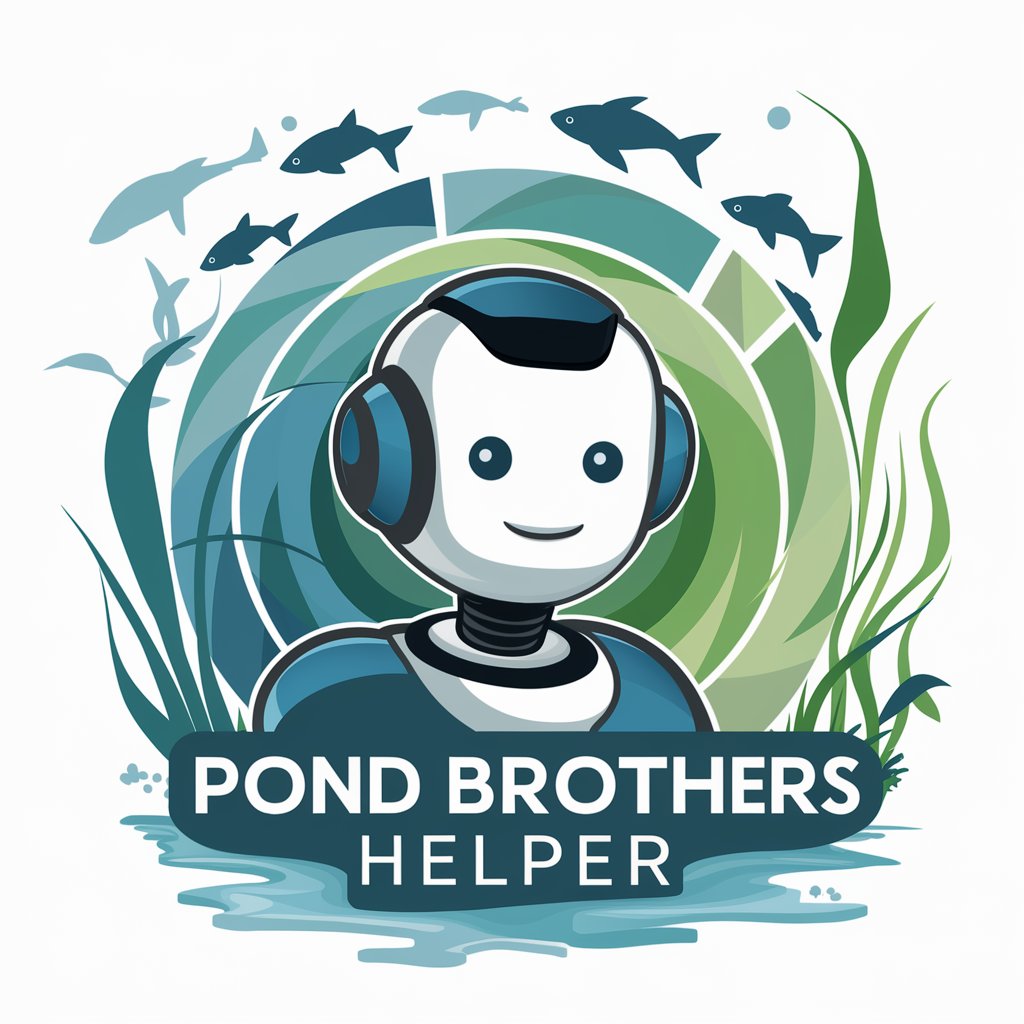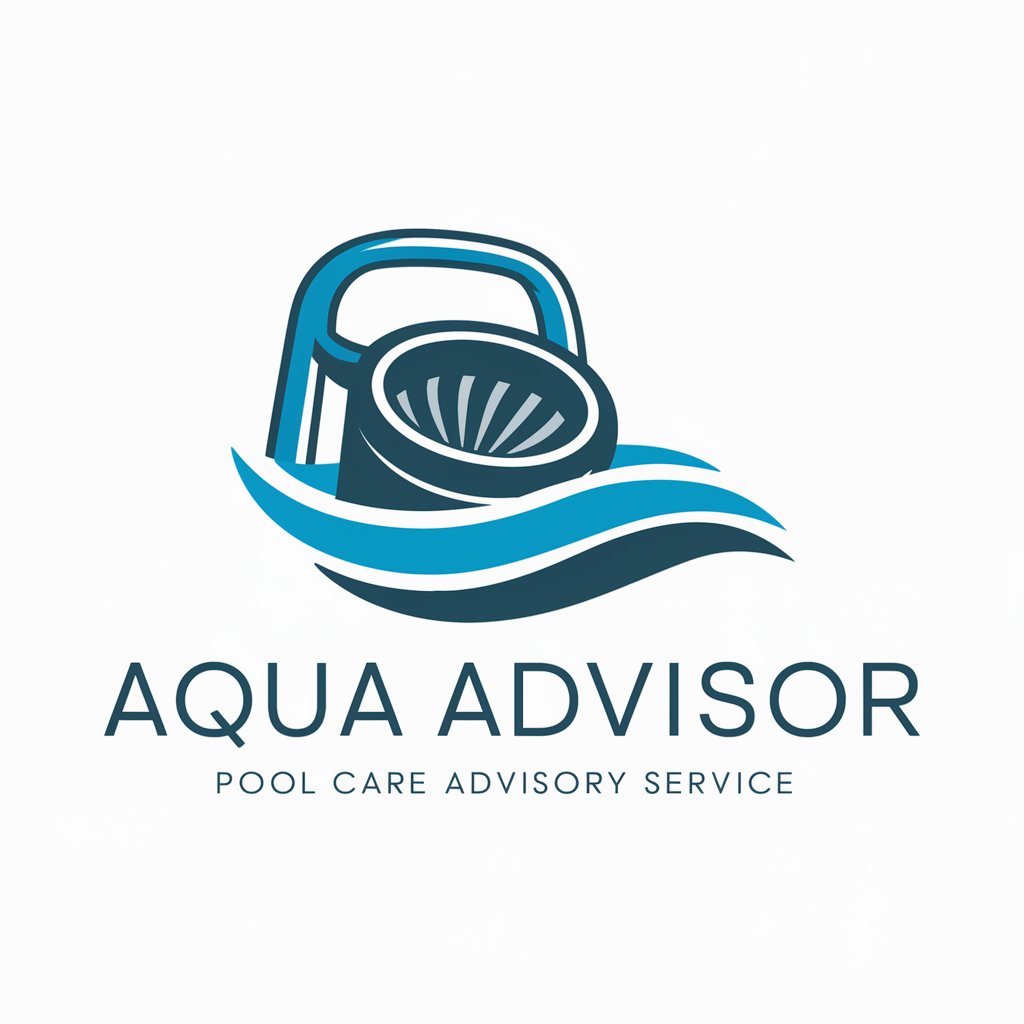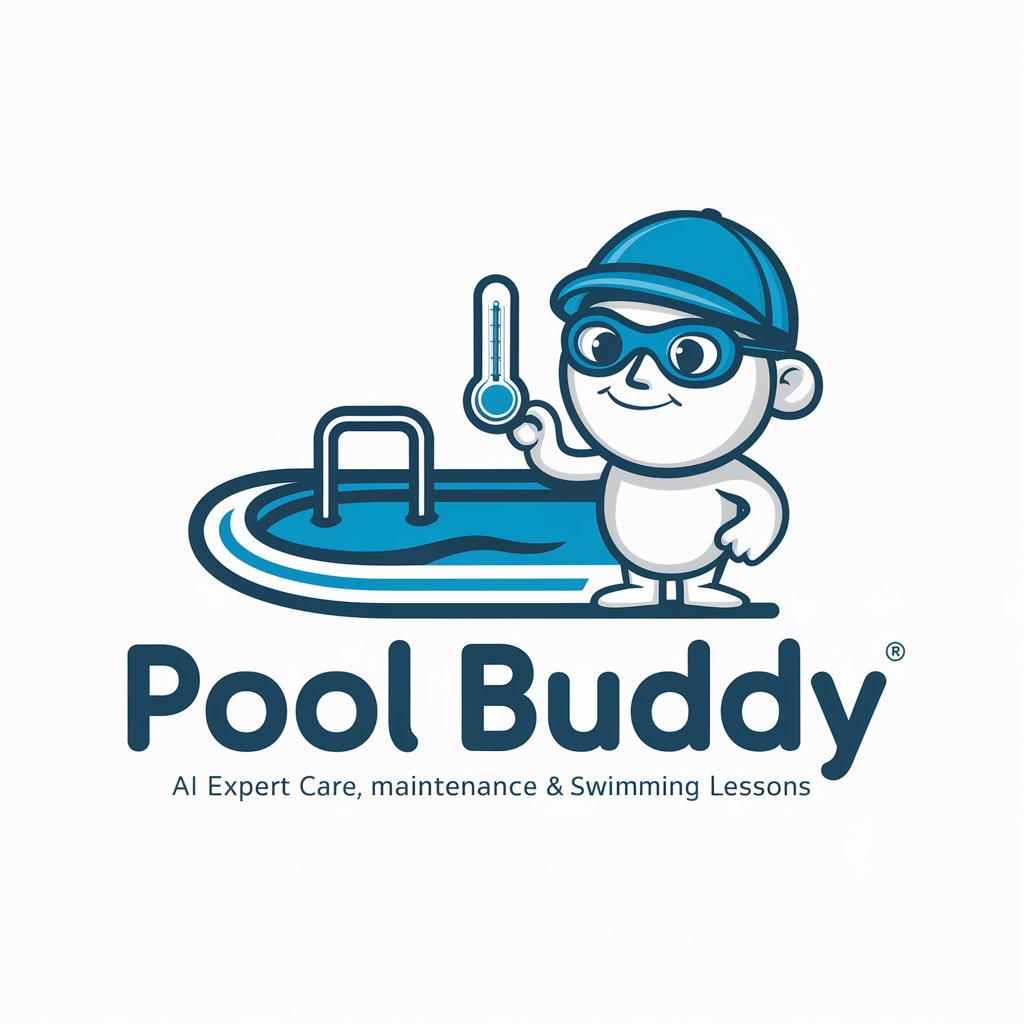
Pond Cleaning - Pond Maintenance Guidance
Welcome to Pond Care Central! How can I assist you today?
Revitalize Your Pond with AI-Powered Insights
Tell me about pond cleaning methods.
What equipment is needed for pond cleaning?
How do I maintain a healthy pond ecosystem?
Discuss the latest trends in pond development.
Get Embed Code
Pond Cleaning: An Overview
Pond Cleaning is designed to ensure the health and clarity of pond water, promoting a balanced ecosystem for aquatic life and enhancing the aesthetic appeal of ponds. This process involves the removal of debris, such as leaves and twigs, the control of algae and weeds, the maintenance of water quality, and the management of sediment buildup. Effective pond cleaning requires a combination of mechanical, biological, and chemical approaches to address various challenges. For example, mechanical filtration can remove larger debris, while biological treatments encourage beneficial bacteria to break down harmful substances. Chemical treatments might be necessary for controlling excessive algae growth. A well-maintained pond not only supports diverse wildlife but also becomes a tranquil and beautiful part of any landscape. Powered by ChatGPT-4o。

Core Functions of Pond Cleaning
Debris and Sludge Removal
Example
Using pond vacuums and nets to extract leaves, twigs, and sediment.
Scenario
In garden ponds where falling leaves and plant decay accumulate on the bottom, causing poor water quality and oxygen levels.
Algae and Weed Control
Example
Applying algaecides and introducing aquatic plants that compete with algae for nutrients.
Scenario
In ponds exposed to excessive sunlight, leading to rampant algae growth that can choke out aquatic life.
Water Quality Management
Example
Utilizing aeration devices and water treatments to maintain oxygen levels and neutralize harmful chemicals.
Scenario
In fish ponds where high fish populations can lead to decreased oxygen levels and increased waste products.
Sediment Management
Example
Dredging to remove excessive sediment buildup that can affect water depth and quality.
Scenario
In larger ponds and lakes where sedimentation over time reduces water depth and can release harmful gases as it decomposes.
Who Benefits from Pond Cleaning Services
Homeowners with Garden Ponds
Individuals who own garden ponds or water features and seek to maintain their beauty and health, ensuring a clear water surface and vibrant aquatic life.
Commercial Property Managers
Managers of commercial properties with decorative or natural ponds who need to maintain these water bodies for aesthetic appeal and environmental compliance.
Farmers with Aquaculture or Livestock Ponds
Farmers who use ponds for aquaculture or to provide water for livestock, requiring regular cleaning to ensure the water is safe and healthy for animals.
Municipalities and Public Parks
Public entities responsible for the upkeep of ponds in parks and public spaces, focusing on environmental health, safety, and recreational value for the community.

How to Use Pond Cleaning
1
Initiate your journey at yeschat.ai to explore Pond Cleaning with a complimentary trial, bypassing the need for login or ChatGPT Plus subscription.
2
Identify your pond's specific needs by assessing its size, condition, and the types of flora and fauna it supports. This will help in choosing the right tools and methods.
3
Select the appropriate pond cleaning equipment or treatments based on your assessment. Options include skimmers, vacuums, biological treatments, and aeration systems.
4
Follow the instructions for your chosen method closely, whether it involves mechanical cleaning, chemical treatment, or natural remedies, ensuring safety for both you and the pond ecosystem.
5
Maintain regular monitoring and upkeep of your pond to prevent future accumulation of debris and growth of unwanted algae, ensuring a healthy pond environment.
Try other advanced and practical GPTs
Kiné Curateur
Elevating Physiotherapy with AI

Agile Expert
Empowering agile transformations with AI

Zodiac Lovers
Discover Love Through the Stars

Chat Hero
Empowering communication with AI insight

Mikoda
Empowering Creativity with AI

Einstein
Explore the Universe with Einstein's AI

A Zany SuperHero Bible Translator
Transforming Scriptures into Superhero Sagas

TDD开发者
Empowering Scala Testing with AI

Code Skills
Code smarter, laugh harder.

Lexideck High-Energy Physics Lab RPG
Unravel Quantum Mysteries with AI

アダチさん24号(ITシステム運用監視基盤篇)
Empowering IT Monitoring with AI

H-1B Analyst
Unravel H-1B Visa Insights with AI

Pond Cleaning Q&A
What is Pond Cleaning?
Pond Cleaning refers to the process and tools involved in maintaining and restoring the health and clarity of ponds by removing debris, controlling algae growth, and ensuring proper water quality and ecosystem balance.
How often should I clean my pond?
The frequency of pond cleaning depends on several factors including pond size, location, type of flora and fauna, and seasonal changes. Generally, a thorough cleaning is recommended at least once a year, with regular maintenance tasks performed throughout the year.
What are the benefits of using Pond Cleaning?
Regular pond cleaning helps maintain clear water, prevents the buildup of harmful substances, supports healthy aquatic life, enhances aesthetic appeal, and prevents issues like algae blooms and oxygen depletion.
Can Pond Cleaning help with algae control?
Yes, Pond Cleaning includes methods and tools designed specifically for controlling algae, such as UV sterilizers, algaecides, and natural treatments like barley straw, ensuring a balanced ecosystem without harming aquatic life.
What equipment is essential for Pond Cleaning?
Essential equipment for Pond Cleaning includes pond vacuums, skimmers, nets, algae control products, water conditioners, and aeration systems, tailored to the specific needs of your pond.
